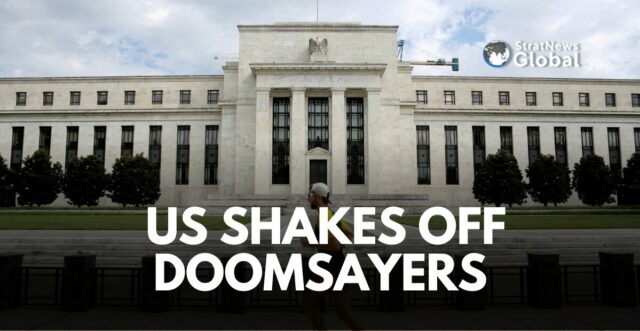Warnings that the US economy is slowing, that a recession maybe around the corner have been voiced at various times, but a study of key indicators paints a more resilient picture.
As the Fed prepares for its next policy decision, a complex set of factors have created a dynamic environment for investors. With inflation slowing, and gold prices on the rise, the Fed is expected to only make modest interest rate cuts next week.
The latest inflation data for August revealed that headline inflation has fallen below its 20-year average for the first time since 2020. This is a sign that inflation is easing.
However, core inflation—excluding volatile food and energy prices—remains stubbornly high, especially in the services sector. This has complicated the outlook for the Fed, which is now expected to cut interest rates by 25 basis points next week, with markets predicting further cuts by the end of 2025.
Dip In Oil Prices
Before Hurricane Francine made landfall in the Gulf of Mexico, weak global growth and an abundant supply of Brent crude saw oil prices dip to its lowest since December 2021. While the hurricane has prompted a short-term boost, several other factors continue to pressure oil prices downard.
Rising tensions in the Middle East and China’s economic struggles could’ve added to the bleak outlook of oil. But in either case, trickled down gas prices have reached the pump.
Surge of Yellow Commodity Prices
On the other hand, gold has seen an upward trend mostly.
Although US job data presents a mixed picture, casting doubts on hopes that the
Fed will cut rates, and also draggd gold prices worldwide, analysts suggest that this downfall is minimal and temporary, and will only increase renewed buying interest.
Despite positive inflation data and a strong labour market, the bond market signals caution. Bond yields initially rose following the inflation report but later reversed. This has reflected concerns about future economic growth.
Bond Yields And Recession
Historically, large declines in the two-year Treasury yield relative to the Fed funds rate have been associated with recessions, raising further uncertainty.
While the Fed is expected to cut rates, the market is weighing the potential for further cuts against the risk of renewed inflation.
The possibility of a prolonged easing cycle continues to loom, but strong corporate earnings and employment trends may delay the recession many have been warning about. For now, the U.S. economy sits at a crossroads.





